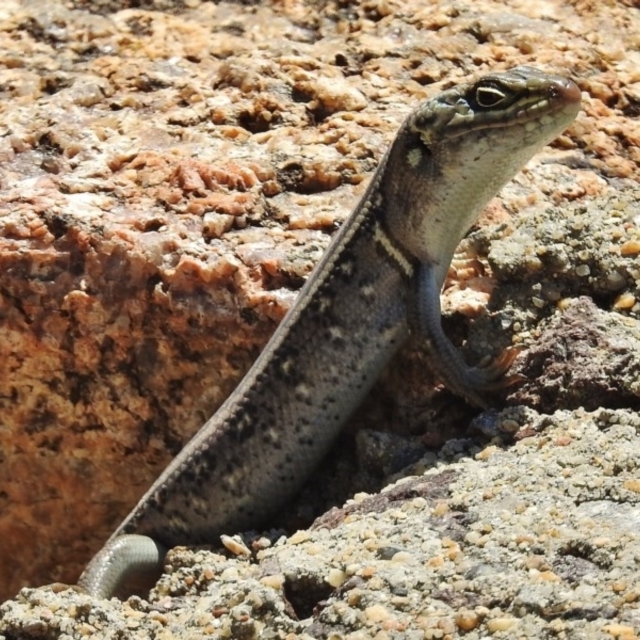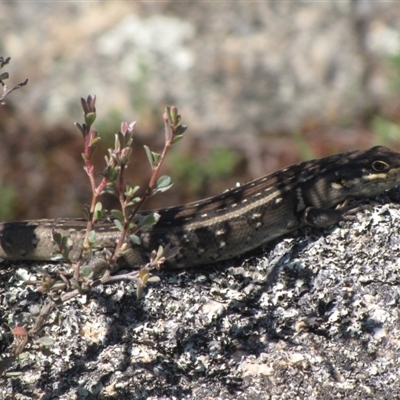Liopholis whitii (White's Skink)
Common name: White’s Skink. SVL 95mm; Total length 250mm
White’s Skink is one of eleven Australian species in the genus Liopholis (previously Egernia). Liopholis is included in Egernia Group of skinks which also includes blue-tongues and other genera. Body shape of Liopholis is squarish in cross-section. Two other skinks in this genus are found in the Canberra region.
White’s Skink is the most common species throughout the region while the Snowy Mountains and Tan-back Skinks are restricted to small isolated populations. White’s Skink is a somewhat variable species and is sometimes referred to as a White’s Skink complex; suggesting that more research is required into its taxonomy.
According to the literature, White’s Skink always has a vertical white bar or spots surrounded by black above the forearm; this is considered diagnostic. Neither of the other species has this feature.
White’s Skink (as does the Snowy Mountains Skink) often has a striped back with yellow markings along the outer stripes. They have similar yellow markings on the upper sides. However, at higher altitudes White's Skink may be striped or not on its back, without the yellow markings, and may be with or without yellow markings on its side. It may look like the Tan-back skink. Interestingly, White’s Skink in Tasmania does not have the yellowing markings on its back. Remember Snowy and Tan-backed Skinks do not have the vertical yellow bars or markings above the forearm.
Distribution: Common throughout region at higher elevation.
Liopholis whitii is listed in the following regions:
Canberra & Southern Tablelands | Southern Highlands | South Coast | Central West NSW | Tasmania
1 2
Species information
- Liopholis whitii Scientific name
- White's Skink Common name
- Not Sensitive
- Local native
- Non-invasive or negligible
- Up to 1468.5m Recorded at altitude
- 85 images trained Machine learning












































































































































































































